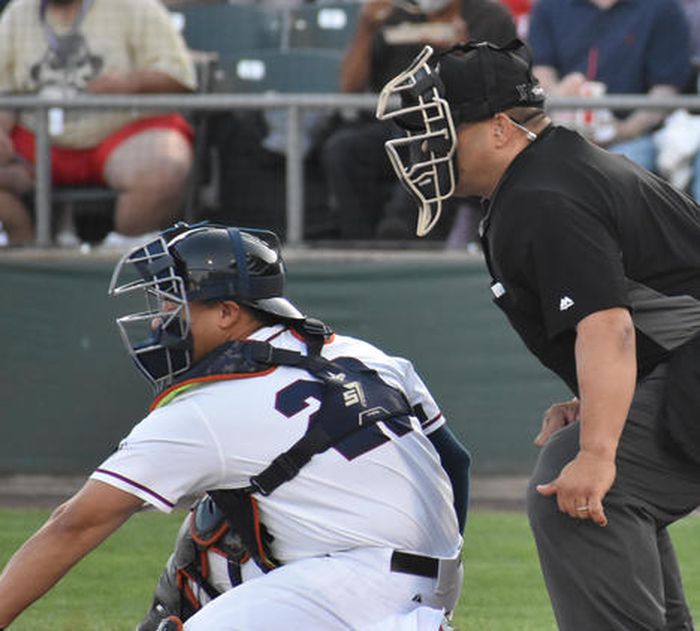


Island Minor League Umpire Takes Part in Ground-Breaking Technology That May Be Used in Majors One Day By Joe D'Amodio | [email protected]
Bulls Head resident Freddy DeJesus saw first-hand last summer how ground-breaking technology is coming to baseball, and could even be in the majors within five years.
DeJesus, an umpire in the Atlantic League, was the first to experiment with the use of an automated strike zone earpiece. The experimentation phases is being backed by Major League Baseball.
The technology is called TrackMan and it’s used to call balls and strikes, something human umpires have done since the beginning of the game.
“I was like no way when I heard I had to use an earpiece," said the 45-year-old DeJesus. "As I’ve had the opportunity to do it now, it’s great. It’s a great opportunity and it’s good for the game. I can see it down the line getting to the next level. It’s just an opportunity for bigger things to happen within baseball.”
The technology is still in the experimental phase and there have been glitches, but it was used in the eight ballparks of the teams in the Atlantic League.
One of the concerns is making sure the connection between the TrackMan software and the umpire’s iPhone and earpiece stays strong for the entire game.
Here’s how the system works: TrackMan, a black box with 3-D Doppler technology, sits above home plate at ballparks and analyzes each pitch that is thrown. It uses a three-dimensional strike zone and calibrated each batters’ size and stance, and adjusts the strike zone accordingly. Once TrackMan identifies a ball’s location it’s recorded and the call is given to the umpire, who in turn makes the ball or strike call.
That’s not to say the system hasn’t experienced glitches. There’s still a lot of work that needs to be done as far as the consistency for the strike zone.
As it turns out, DeJesus’ earpiece for the first game using the automated strike system was recently requested by the National Baseball Hall of Fame Museum, and now resides in Cooperstown, and he’s happy to have done it.
“I became very excited about it going to the Hall of Fame,” he said. “It was like, ‘wow I can be a part of history.’ "
Tom Shieber, senior curator of the Hall of Fame, says the new technology may one day make it to the majors.
“ALPB’s introduction of ball-strike technology to high level professional baseball is historically significant," said Shieber. “Even more fascinating is the prospect that ABS technology may reach the big leagues as a result of the Atlantic League’s partnership with Major League Baseball.”
DeJesus thinks it can get to the big leagues and be very successful.
“I believe it will work at MLB,” he said. “Their technology is very sophisticated. I believe the opportunity to get it right is the goal of Major League Baseball.”
DeJesus sees both some advantages and disadvantages with the new technology.
“The advantages: The ‘strike zone’ will be more consistent day to day as opposed to umpire to umpire,” he said. “Disadvantages: It takes away the art of framing, takes away the human relationship of umpire and catcher and takes away from some of the better arguments of umpire/ manager."
Another significant change DeJesus sees with the new technology is one baseball purists might applaud, even though the technology is something those same folks will frown upon.
“I also believe it turns the game into more than a strikeout or home run-type of game. It’s going to bring small ball back to baseball," he said.
|
Browse by Month »
August 2023 December 2022 May 2022 December 2021 November 2021 October 2021 September 2021 August 2021 June 2021 April 2021 March 2021 February 2021 November 2020 October 2020 June 2020 May 2020 April 2020 March 2020 February 2020 January 2020 December 2019 November 2019 September 2019 August 2019 July 2019 June 2019 April 2019 March 2019 February 2019 December 2018 July 2018 June 2018 May 2018 April 2018 March 2018 February 2018 October 2017 September 2017 August 2017 July 2017 June 2017 April 2017 January 2017 October 2016 September 2016 July 2016 June 2016 May 2016 April 2016 March 2016 February 2016 September 2015 August 2015 July 2015 June 2015 |